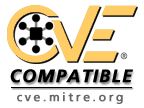Use After Free |
| Weakness ID: 416 (Weakness Base) | Status: Draft |
Description Summary
| Scope | Effect |
|---|---|
Integrity | The use of previously freed memory may corrupt valid data, if the memory area in question has been allocated and used properly elsewhere. |
Availability | If chunk consolidation occur after the use of previously freed data, the process may crash when invalid data is used as chunk information. |
Integrity | If malicious data is entered before chunk consolidation can take place, it may be possible to take advantage of a write-what-where primitive to execute arbitrary code. |
Example 1
Example 2
The following code illustrates a use after free error:
| Reference | Description |
|---|---|
| CVE-2006-4997 | freed pointer dereference |
Phase: Architecture and Design Choose a language that provides automatic memory management. |
Phase: Implementation Ensuring that all pointers are set to NULL once they memory they point to has been freed can be an effective strategy. The utilization of multiple or complex data structures may lower the usefulness of this strategy. |
Phase: Implementation Use a static analysis tool to find instances of use after free. |
| The use of previously freed memory can have any number of adverse consequences -- ranging from the corruption of valid data to the execution of arbitrary code, depending on the instantiation and timing of the flaw. The simplest way data corruption may occur involves the system's reuse of the freed memory. Like double free errors and memory leaks, use after free errors have two common and sometimes overlapping causes: - Error conditions and other exceptional circumstances. - Confusion over which part of the program is responsible for freeing the memory. In this scenario, the memory in question is allocated to another pointer validly at some point after it has been freed. The original pointer to the freed memory is used again and points to somewhere within the new allocation. As the data is changed, it corrupts the validly used memory; this induces undefined behavior in the process. If the newly allocated data chances to hold a class, in C++ for example, various function pointers may be scattered within the heap data. If one of these function pointers is overwritten with an address to valid shellcode, execution of arbitrary code can be achieved. |
| Nature | Type | ID | Name | View(s) this relationship pertains to |
|---|---|---|---|---|
| ChildOf |  Weakness Class Weakness Class | 398 | Indicator of Poor Code Quality | Seven Pernicious Kingdoms (primary)700 |
| ChildOf |  Category Category | 399 | Resource Management Errors | Development Concepts (primary)699 |
| ChildOf |  Category Category | 633 | Weaknesses that Affect Memory | Resource-specific Weaknesses (primary)631 |
| ChildOf |  Weakness Base Weakness Base | 672 | Operation on a Resource after Expiration or Release | Research Concepts (primary)1000 |
| ChildOf |  Category Category | 742 | CERT C Secure Coding Section 08 - Memory Management (MEM) | Weaknesses Addressed by the CERT C Secure Coding Standard (primary)734 |
| ChildOf |  Category Category | 808 | 2010 Top 25 - Weaknesses On the Cusp | Weaknesses in the 2010 CWE/SANS Top 25 Most Dangerous Programming Errors (primary)800 |
| CanPrecede |  Weakness Base Weakness Base | 120 | Buffer Copy without Checking Size of Input ('Classic Buffer Overflow') | Research Concepts1000 |
| CanPrecede |  Weakness Base Weakness Base | 123 | Write-what-where Condition | Research Concepts1000 |
| MemberOf |  View View | 630 | Weaknesses Examined by SAMATE | Weaknesses Examined by SAMATE (primary)630 |
| PeerOf |  Weakness Base Weakness Base | 364 | Signal Handler Race Condition | Research Concepts1000 |
| PeerOf |  Weakness Variant Weakness Variant | 415 | Double Free | Development Concepts699 Research Concepts1000 |
| Mapped Taxonomy Name | Node ID | Fit | Mapped Node Name |
|---|---|---|---|
| 7 Pernicious Kingdoms | Use After Free | ||
| CLASP | Using freed memory | ||
| CERT C Secure Coding | MEM00-C | Allocate and free memory in the same module, at the same level of abstraction | |
| CERT C Secure Coding | MEM01-C | Store a new value in pointers immediately after free() | |
| CERT C Secure Coding | MEM30-C | Do not access freed memory |
| A weakness where code path has: 1. start statement that relinquishes a dynamically allocated memory resource 2. end statement that accesses the dynamically allocated memory resource |
| Submissions | ||||
|---|---|---|---|---|
| Submission Date | Submitter | Organization | Source | |
| 7 Pernicious Kingdoms | Externally Mined | |||
| Modifications | ||||
| Modification Date | Modifier | Organization | Source | |
| 2008-07-01 | Eric Dalci | Cigital | External | |
| updated Potential Mitigations, Time of Introduction | ||||
| 2008-08-01 | KDM Analytics | External | ||
| added/updated white box definitions | ||||
| 2008-09-08 | CWE Content Team | MITRE | Internal | |
| updated Applicable Platforms, Common Consequences, Relationships, Observed Example, Other Notes, Taxonomy Mappings | ||||
| 2008-11-24 | CWE Content Team | MITRE | Internal | |
| updated Relationships, Taxonomy Mappings | ||||
| 2009-03-10 | CWE Content Team | MITRE | Internal | |
| updated Demonstrative Examples | ||||
| 2009-05-27 | CWE Content Team | MITRE | Internal | |
| updated Demonstrative Examples | ||||
| 2009-10-29 | CWE Content Team | MITRE | Internal | |
| updated Common Consequences | ||||





